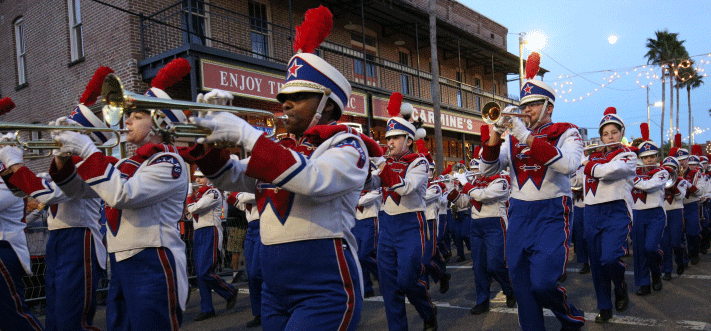Posture is one of the most important aspects of marching band. It fixes almost all of the band’s issues. Standing tall with great posture will help your students march better, sound better, play louder and have better shoulders in your slides. Here are a few tips and analogies for improving student posture during marching band.
Standing Tall
While standing with their feet together or at a 45° angle, students can begin to get in the general position by standing tall. An analogy we like to use is to ask the students if they remember when they were young children and were not tall enough to ride a particular ride at an amusement park. We all stood underneath the minimum height requirement sign and stretched for everything we were worth so our parents would see that we are tall enough for that ride. This is something they can bring to the field to achieve the maximum height in their posture.
Straight Lines
Students can continue improving posture by thinking about creating long, straight lines between the following body parts:
- Ankles and hips; knees should be straight, but not locked
- Hips and shoulders
- Shoulders and ears
- Ankles and ears
Another way I like to help students visualize this is to think about having their upper body separated from their lower body, pulling the chest away from the waist.
Chin Placement
This oft-neglected aspect of posture makes a huge difference; having the chin up at a 10° angle will cause the entire body to rise. The chin being level works as well, but make sure the chin does not drop below level. When the chin goes to the ground the posture goes down with it.
Distribution of Weight
It is important to have the weight be slightly to the ball of the foot and not let the weight be centered in the foot or back on the heels. We like to say that 60% of the body weight should be forwarded on the ball of the foot and 40% on the heel.
How do you encourage your students to maintain good posture?


